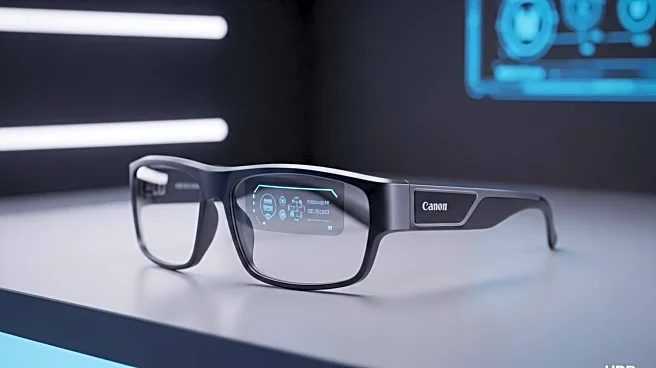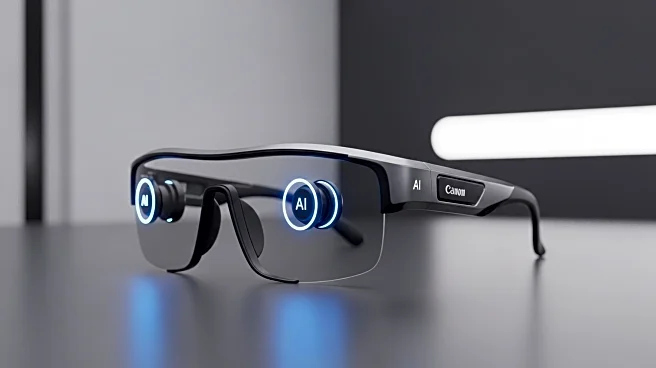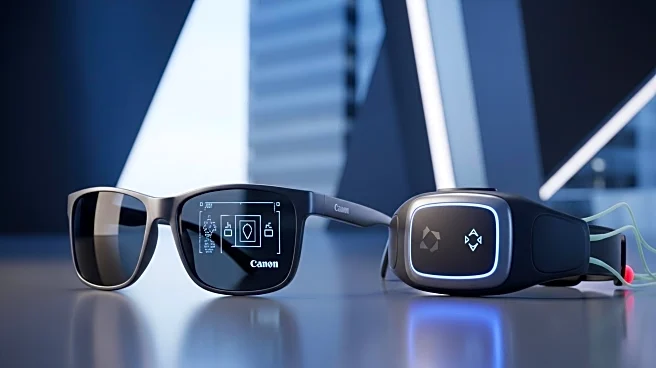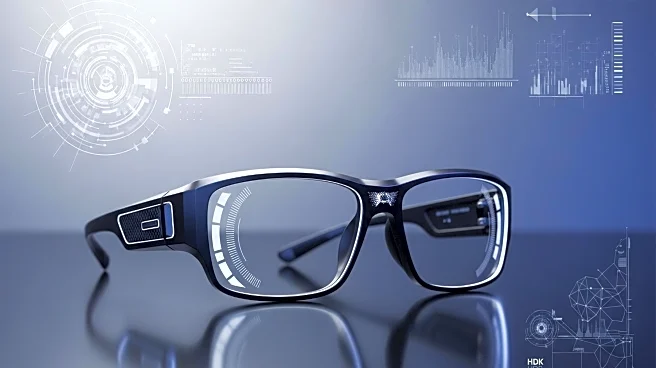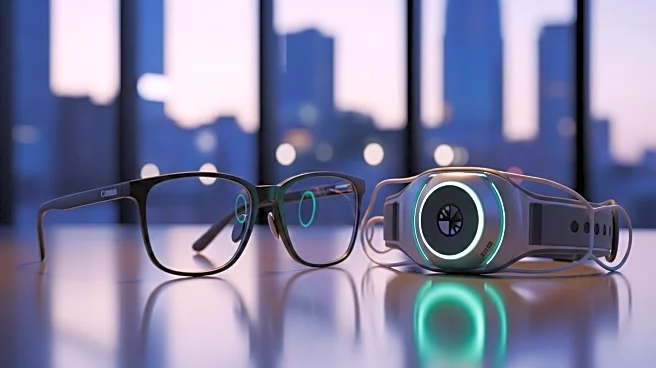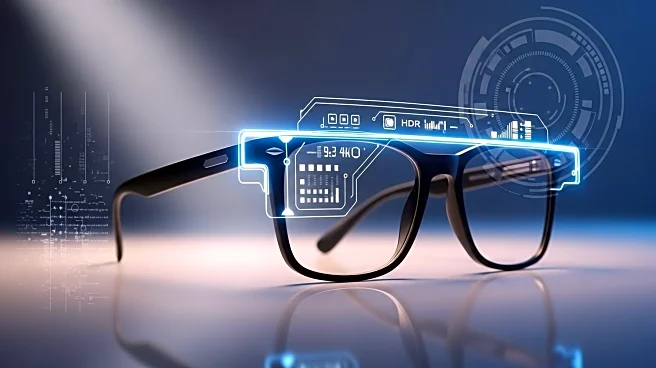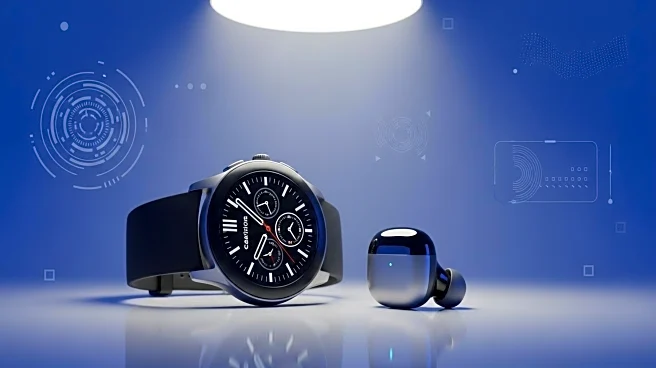What's Happening?
Meta has launched its new Ray-Ban Display glasses, priced at $799, which integrate a heads-up display controlled by a gesture-sensitive neural wristband. This innovative device allows users to interact with the display through hand gestures, offering a futuristic experience reminiscent of Google Glass. The glasses feature a high-resolution screen visible in one eye, controlled by electromyography sensors in the wristband that detect neural impulses. Despite the advanced technology, the glasses have limitations, such as a short battery life of three to six hours and a lack of integration with many smartphone functions.
Why It's Important?
The introduction of Meta's Display glasses marks a significant step in wearable technology, potentially transforming how users interact with digital content. This development could influence the future of augmented reality (AR) devices, offering a more immersive and hands-free experience. However, the limited battery life and functionality may hinder widespread adoption. The success of these glasses could drive further innovation in the AR space, impacting industries such as tech, retail, and entertainment by providing new ways to engage with digital content.
What's Next?
As Meta continues to refine its Display glasses, potential updates could address current limitations, such as extending battery life and expanding app compatibility. The company may also explore partnerships with other tech firms to enhance the glasses' functionality. Consumer feedback will likely play a crucial role in shaping future iterations, and the response from early adopters could influence the direction of AR technology development. Additionally, competitors in the tech industry may accelerate their own AR projects in response to Meta's advancements.
Beyond the Headlines
The ethical implications of wearable AR technology, such as privacy concerns and data security, are significant. As these devices become more integrated into daily life, questions about user consent and data collection will need to be addressed. Furthermore, the cultural impact of such technology could alter social interactions, as users navigate the balance between digital and physical worlds. Long-term, the widespread adoption of AR glasses could lead to shifts in how people access information and interact with their environment.

